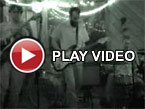Throbbing Gristle, "D.o.A.: The Third and Final Report of Throbbing Gristle"
 By its very nature D.o.A. is probably the messiest and least cohesive of the TG catalog. Assembled from the same mix of live and studio performance recordings that made up Second Annual Report, there is just a greater amount of stylistic shifts here compared to its predecessor.  It was followed by 20 Jazz Funk Greats, which constitutes the first true "album" from TG. That disjointedness though is what always drew me into this album, making it among my favorites they ever recorded.
By its very nature D.o.A. is probably the messiest and least cohesive of the TG catalog. Assembled from the same mix of live and studio performance recordings that made up Second Annual Report, there is just a greater amount of stylistic shifts here compared to its predecessor.  It was followed by 20 Jazz Funk Greats, which constitutes the first true "album" from TG. That disjointedness though is what always drew me into this album, making it among my favorites they ever recorded.
Looking back, Second Annual Report has an undeniable sense of evil enshrouding it, but presented in such a way that either resembles the cold, detached sterility of a government document (hence the title), or the intentional, secretive sparseness of illicit pornography.D.o.A., on the other hand, seems excised from day to day life, yet still pervaded by that sinister undercurrent, although in a more subversive manner.
The cover art exemplifies this perfectly:the late 1970s era photograph of a young girl sitting in front of a hi-fi system is so normal and mundane that it could be the cover of a catalog, yet the small inset of a child posed in an undeniably pedophilic image turns the everyday into the disturbing, which was exacerbated by the calendar of similar images included with early pressings.
A sizable portion of the audio follows the same trajectory.The audio data culled off of a found cassette on "IBM" surely sounds familiar to any curious individual who had an early tape-based personal computer, but the blips are eventually paired with ghostly, disembodied noises that are far less familiar.The shimmering, beautiful synths of "AB/7A" also come across as disarmingly conventional and pleasant, but within the context of the album feels like it must have some sort of malevolence lurking beneath it.
That track, a Chris Carter solo work, is one of four pieces in which each member created and recorded their own songs.Genesis P-Orridge's "Weeping" is disembodied layers of echoing violin sounds and flat vocals, while both Cosey Fanni Tutti ("Hometime") and Peter Christopherson ("Valley of the Shadow of Death") employ dialog recordings.The former feels more "day in the life" due to the kids talking paired with Cosey’s ambient guitar playing, conjuring images that Tutti’s life outside of the band was shockingly normal and not one fit for a "wrecker of civilization."Christopherson's work, on the other hand, puts the conversations just out of hearing range, and with the tape treated electronic passages added, seems much more secretive and illicit.
As far as disturbing goes, one of the most exemplary tracks of this, "Hamburger Lady," appears at the center of this album.One of the band’s most famous compositions, it’s synthetic swells and heartbeat like percussion create the perfect tense backing for Genesis' spoken word narrative about a burn victim and processed violin.Even over 30 years later, there are few songs that reach the same level of creepy after repeated listenings.
Amongst these are a slew of sonic sketches, many culled from live performances that are of varying quality.The short "Hit By A Rock" and "Blood on the Floor" are a few of the band’s most "rock" moments, the latter being a slowed down take on "Zyklon B. Zombie," with different lyrics.The band's often-ignored sense of humor also appears here with the inclusion of "United."A 7" released before D.o.A., it was a rather accessible, catchy proto-synth pop song that garnered them some positive attention in the music world.As was the norm in the industry, they included it on the album, but sped up to be less than 17 seconds long.
Like the other albums, a remastering was definitely needed, as the original Grey Area/Mute discs had a noticeably low volume level and just an overall muffled, flat sound.The second disc here covers a lot of the same territory as the Live Volume 2 compilation, and the "We Hate You"/"Five Knuckle Shuffle" single.Not surprisingly, the live material from this era follows a similar sound to the album, from the creepy stretched out ambience of "It’s Always the Way" to the wet, rhythmic throb of "Industrial Muzak."
A live take of "Hamburger Lady" is also included, but I always felt it lacked the subtlety of the studio version."IBM," however, is an extended take of pulsing electronics and jagged guitar that utterly overshadows the version that opens the album.Sadly, the full version of "D.o.A." from the era isn’t included, which is much longer and varied than the still enjoyable album take that’s included.
Although it feels less like an album and more like a compilation, which is what it essentially is, D.o.A. remains one of my favorite moments in the TG catalog, largely due to its complete comfort in jumping from answering machine death threats to gorgeous synth pop to pure white noise.While I can completely understand why many favor Second Annual Report or 20 Jazz Funk Greats, this one just always stands a bit higher for me.
samples:
 




